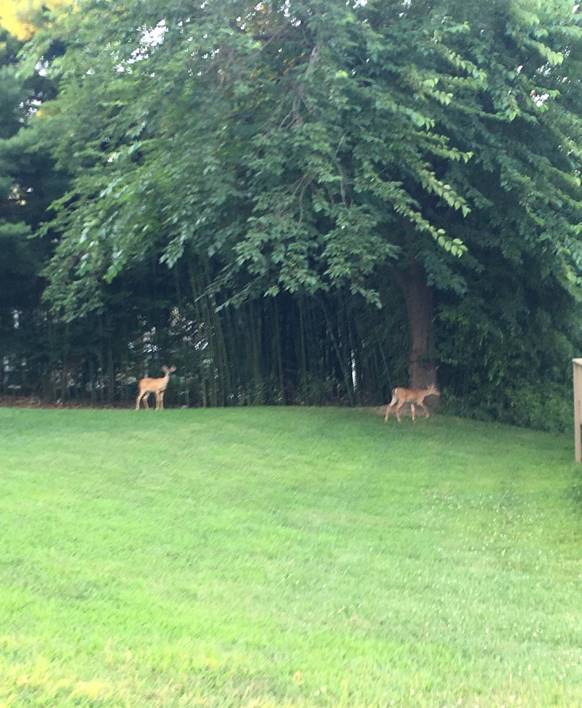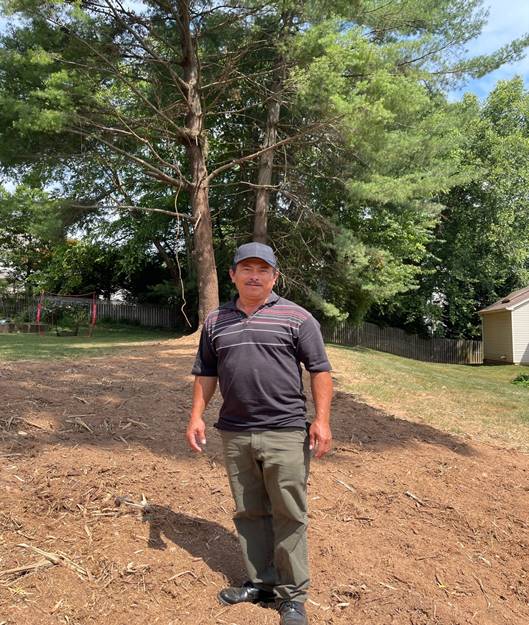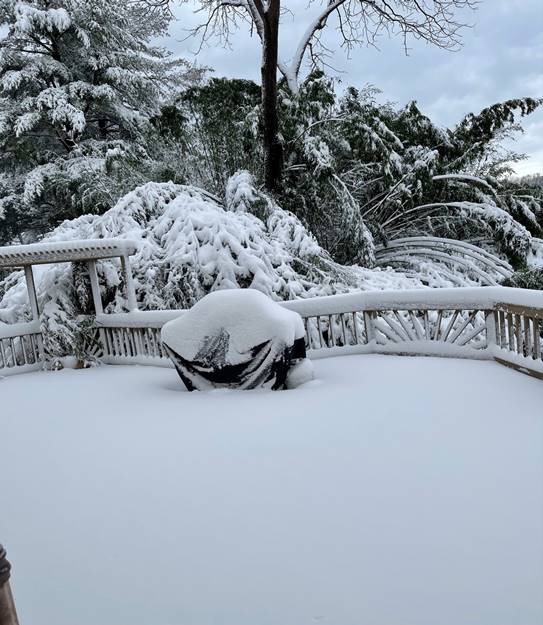
Deer foraging bamboo in Oakton

Jose Lara

Bamboo in winter
Echoes of History: A Journey along Hunter Mill Road and Beyond
By C. Naseer Ahmad
Washington, DC
Venture forth on an enthralling expedition across the vast expanse of America, exploring far beyond the well-trodden paths of its famous landmarks and renowned conflicts. Prepare to immerse yourself in the hidden allure that meanders along the rustic byways and historic avenues, painting a vivid tapestry of stories waiting to be unraveled.
As you traverse the charming towns of Oakton, Reston, Vienna, and Great Falls, let the grandeur of Hunter Mill Road regale you with its rich historical tapestry, where echoes of a bygone era resonate with the footsteps of more than 60 generals who once traversed its hallowed grounds during the Civil War.
Amidst the serene beauty of Flint Hill Cemetery, nestled at the crossroads of Hunter Mill Road and Route 123, lies a poignant sanctuary where 26 Civil War veterans slumber in tranquil repose, their tales of yore whispering softly through the annals of time. Despite the passage of a century and a half since the tumultuous days of the Civil War, vestiges of the past still linger along this storied route, weaving a captivating narrative of diversity and intrigue.
Here, a vibrant mosaic of individuals from varied backgrounds converge, where a notorious white supremacist lives in the same area as a famed spy thriller writer, creating a mesmerizing juxtaposition of personas and narratives that defy conventional expectations. Today, the once-bloody battlegrounds of Confederate and Union clashes have transformed into a vibrant habitat teeming with a flourishing deer population, infusing a natural splendor and complexity into the landscape.
This resurgence of wildlife presents a novel challenge for gardening aficionados, as the graceful deer exhibit a penchant for grazing on verdant vegetables and blooming flower beds, particularly indulging in the stately bamboo trees imported from distant Asia, lending an aura of evergreen elegance to the surroundings.
You might be curious about Bamboo's presence in Fairfax County, Virginia - how could such a unique plant be thriving in this location? The story begins with an individual who cherished Bamboo deeply, planting its first roots in the area. However, Bamboo holds much more significance beyond its botanical roots; it is a symbol of both historical heritage and cultural resilience. It serves as a powerful representation of adaptability and endurance, embodying a rich tapestry of stories that transcend its mere existence as a plant.
Previously employed in crafting intricate traditional tools like the revered "kalams" pens, bamboo now poses a contemporary conundrum with its unchecked growth, prompting regulatory measures in Fairfax County to curb its expansion and safeguard the delicate ecosystem.
Let me paint a picture of the remarkable transformation that has taken place in this area in recent years. What was once a quiet village called Oakton has blossomed into a vibrant community, now bustling with residents from diverse corners of the world living together in perfect harmony. In a beautiful display of unity and cooperation, Jose Lara, a passionate immigrant from El Salvador, teamed up with four homeowners, three of whom are of Asian descent, to tackle the challenge of invasive bamboo encroaching on their properties
Now, let's explore the invaluable role that recent immigrants have had in addressing the Bamboo problem. Their exceptional dedication and relentless work in the face of challenging conditions – scorching heat and suffocating humidity - highlight the power of unity and collaboration in overcoming obstacles, showcasing the resilient spirit of humanity as a whole.
Let me share with you the inspiring creativity of the immigrants in this community. Instead of discarding the leftover shreds of bamboo, these resourceful residents ingeniously repurpose them to smooth out uneven terrains. This remarkable initiative beautifully showcases a blend of environmental awareness and innovative thinking.
To offer you a glimpse into the interconnected fabric of our world, allow me to whisk you away on a teleporting journey to the quaint yet historically rich village of Kharian, nestled ten thousand miles away. You may be wondering, why Kharian and what connection does it hold with Oakton and Hunter Mill Road.
Similar to Oakton and its surroundings, Kharian and its neighboring regions served as significant locations during the Mughal and Sikh Empires. This area bore witness to notable historical events, including some of the most intense battles between the Sikhs and the British forces. Let's embark on a fascinating exploration of the shared heritage and stories that tie these distant lands together.
Today, Kharian is affectionately known as 'little Norway' due to the significant migration to Norway in the 1960s and 1970s. However, Kharian's connection to Oakton runs deeper than its nickname. In the early twentieth century, three brothers from Kharian - Chaudhry Abdul Rehman, Chaudhry Saad ud Din, and Dr Karim ud Din - laid the foundations of a lasting legacy. Remarkably, their descendants now reside along Hunter Mill Road, carrying on the traditions of camaraderie and celebration established by their forefathers. Through gatherings for chai, desi breakfasts, and Eid festivities, the bond among these generations endures. One can't help but wonder if the three brothers would marvel at the twist of fate that led their offsprings to make a home in this historic American enclave. Their spirits, perhaps, are smiling upon the unity and continuity of their family in this unexpected corner of the world.

